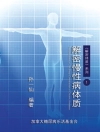Classical Mechanics: A professor–student collaboration is a textbook tailored for undergraduate physics students embarking on a first-year module in Newtonian mechanics. This book was written as a unique collaboration between Mario Campanelli and students that attended his course in classical mechanics at University College London. Taking his lecture notes as a starting point, and reflecting on their own experiences studying the material, the students worked together with Campanelli to produce a comprehensive course text that covers a familiar topic from a new perspective.
All the fundamental topics are included, starting with an overview of the core mathematics and then moving on to statics, kinematics, dynamics and non-inertial frames, as well as fluid mechanics, which is often overlooked in standard university courses. Clear explanations and step-by-step examples are provided throughout to break down complicated ideas that can be taken for granted in other standard texts, giving students the expertise to confidently tackle their university tests and fully grasp important concepts that underpin all physics and engineering courses.
Key Features
- Written in collaboration with students, offering a revolutionary method of delivering knowledge between peers
- Based on the lectures of UCL professor Mario Campanelli, who has 25 years of teaching experience
- Clearly explains the physical concepts and the mathematical background behind classical mechanics
- Exercises in each chapter allow students to test their understanding of the concepts
Inhoudsopgave
Acknowledgements
Preface
1 Mathematical Preliminaries
2 Newton’s Laws
3 Kinematic relations
4 Oscillatory Motion
5 Angular Momentum and Central Forces
6 Centre of Mass and Collisions
7 Orbits
8 Rigid Bodies
9 Accelerating Frames of Reference
10 Fluid Mechanics
A Index notation
B Solving differential equations
C The Lagrangian Method
D Solutions to Mathematical Preliminaries E Solutions to Newton’s Laws F Solutions to Kinematic Relations G Solutions to Oscillatory Motion H Solutions to Angular Momentum and Central Forces I Solutions to Centre of Mass and Collisions J Solutions to Orbits K Solutions to Rigid Bodies L Solutions to Accelerating Frames of Reference M Solutions to Fluid Mechanics Bibliography
Over de auteur
Mario Campanelli is an experimental particle physicist with decades of experience on the world’s highest energy colliders. In 2007 he joined the faculty of University College London to work on the ATLAS experiment at CERN, where he mainly studies the properties of strong interactions. In 2018 he was nominated professor at UCL. He has 25 years of experience in teaching graduate- and undergraduate-level courses.
Antonio d’Alfonso del Sordo is a mathematics and physics student in his third year at UCL. He has volunteered as a maths and physics tutor in London high schools through UCL, and worked as a student ambassador for his department, as well as mentor for first-year students.
Camilla Tacconis will soon graduate from University College London with a BSc in physics. She aspires to become a researcher in solid state physics, and one day use this textbook to lecture on classical mechanics at University.
Enrico Caprioglio is a third-year theoretical physics student, graduating in 2020. He has great experience in science communication, having worked at the London International Youth Science Forum for four years.
Lodovico Scarpa is a theoretical physics student who dreams of becoming a researcher. His interests lie in the fields of (loop) quantum gravity and quantum information.
Muhammad Tayyab Shabbir is a third-year undergraduate student at University College London. Tayyab has a background in the English and Pakistani education system and used this experience to make his contributions to the book accessible to students from all educational backgrounds.
Sheila María Pérez García is a joint honours mathematics and physics student currently in her third year of study. She established a strong mathematical foundation in the book on which the more complex physical concepts rest.












